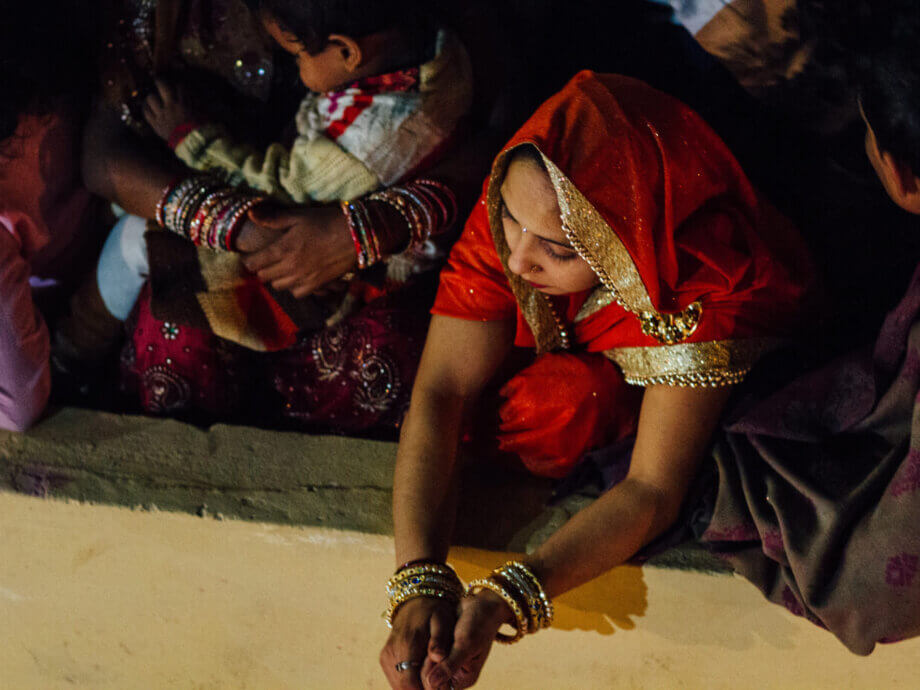Introduction: A Persistent Crisis in Bangladesh
Bangladesh faces one of the highest rates of child marriage in the world. Despite decades of economic progress and social development, the practice remains deeply entrenched, with over half of Bangladeshi girls married before the age of 18. This phenomenon is not only a violation of human rights but also a major barrier to the country’s development, affecting health, education, and economic outcomes for generations.
Recent data from UNICEF, UN Women, and Plan International indicate that as of 2025, 51.4% of Bangladeshi girls are married before their 18th birthday, the highest rate in Asia and among the top ten globally. The persistence of child marriage in Bangladesh is driven by a complex interplay of poverty, social norms, legal loopholes, and emerging challenges such as climate change and pandemics. Understanding the causes, consequences, and potential solutions is crucial for policymakers, communities, and advocates seeking to end this harmful practice.
Why Does Child Marriage Persist in Bangladesh?
Despite legal prohibitions, child marriage remains widespread in Bangladesh. The reasons are multifaceted, rooted in economic, social, and cultural factors that reinforce each other.
Poverty and Economic Insecurity
Poverty is a primary driver of child marriage. Families facing economic hardship often see marrying off their daughters as a way to reduce financial burdens. A 2023 World Bank study found that girls from the poorest households are over three times more likely to be married before 18 than those from wealthier families. The practice of dowry—where the bride’s family pays money or goods to the groom’s family—further incentivizes early marriage, as dowry demands tend to increase with the girl’s age and education level.
Dr. Zahid Hussain, former lead economist of the World Bank’s Dhaka office, explains:
“In most child marriage cases, the families and neighbourhoods are indeed poor. Since many families cannot provide their daughters with education and do not see a path out of poverty, they view marrying off their underage daughters as the only viable way to secure their future.”
Dowry remains a significant factor, with families believing that younger brides require lower dowries. This economic calculus often outweighs the long-term costs to girls’ health and education.
Patriarchal Social Norms and Gender Inequality
Bangladesh’s patriarchal society places a premium on controlling girls’ sexuality and upholding family honor. Early marriage is often seen as a way to protect girls from perceived risks, such as premarital relationships or sexual violence, and to maintain social status. In many communities, a girl’s value is still closely tied to her marital status, and families fear social stigma if daughters remain unmarried past adolescence.
Dr. Soma Dey, Associate Professor at the University of Dhaka, notes:
“Dowry is an ancient practice in the Indian subcontinent, the impacts of which are still felt today. The younger you marry off your daughter, the less dowry you have to pay.”
These norms are reinforced by limited opportunities for girls outside marriage, especially in rural areas where education and employment options are scarce.
Legal Loopholes and Weak Enforcement
Bangladesh’s legal framework sets the minimum marriage age at 18 for females and 21 for males. However, the 2017 Child Marriage Restraint Act allows exceptions under “special circumstances,” a loophole that is widely exploited. Enforcement is often weak, with local officials, marriage registrars, and even community leaders sometimes complicit in underage marriages. Many child marriages are only stopped when local authorities intervene, often after a complaint is made by the girl or concerned community members.
Professor Zobaida Nasreen, Department of Anthropology, University of Dhaka, observes:
“Most child marriages are only stopped when the local UNO (Upazila Nirbahi Officer) arrives with force. More often than not, media members accompany them. Such practices promote hero worship rather than bringing about cultural change.”
Impact of Crises: Climate Change and Pandemics
External shocks such as natural disasters and pandemics have exacerbated the problem. Bangladesh is highly vulnerable to climate change, with frequent floods, cyclones, and river erosion displacing millions. Families facing displacement and loss of livelihoods often see early marriage as a coping mechanism—one less mouth to feed and a perceived way to ensure daughters’ safety.
An International Rescue Committee study in 2022 found a 39% increase in child marriages directly linked to climate change impacts. The COVID-19 pandemic also led to a spike in child marriages, as school closures and economic hardship pushed families to marry off daughters at younger ages.
UNICEF Bangladesh Chief of Child Protection Natalie McCauley explains:
“Poverty is definitely one of the dominant triggering factors in child marriage. However, we are yet to come across conclusive data as regards the actual extent of income poverty due to COVID-19.”
The Consequences: Health, Education, and Intergenerational Impacts
The effects of child marriage are profound and far-reaching, impacting not only the girls themselves but also their families, communities, and the nation as a whole.
Health Risks and Maternal Outcomes
Girls married before 18 are at higher risk of early and frequent pregnancies, which can lead to life-threatening complications. Adolescent mothers are more likely to experience chronic illness, malnutrition, and shortened life expectancy. A study published in BMC Nutrition found that women married before 18 had significantly higher rates of chronic energy deficiency, and their children were more likely to suffer from stunting, underweight, and wasting.
Another study in Nature linked child marriage to increased risk of preterm birth, mediated by higher exposure to environmental toxins and poor nutrition. These health risks are compounded by limited access to reproductive health services and lack of autonomy in decision-making.
Educational Disruption and Lost Opportunities
Child marriage is a leading cause of school dropout among girls in Bangladesh. Once married, girls are often expected to prioritize household duties and childbearing over education. The Bangladesh Bureau of Educational Information and Statistics reported a secondary school dropout rate of over 40% for girls in 2022, with child marriage cited as a major factor.
Education is a powerful tool for empowerment and economic mobility. Girls who complete secondary education are more likely to delay marriage, have fewer children, and achieve better health outcomes. The loss of educational opportunities perpetuates cycles of poverty and limits the country’s human capital development.
Violence and Lack of Agency
Married girls are at increased risk of intimate partner violence, sexual abuse, and exploitation. A 2022 UN report found that 28% of adolescent girls aged 15-19 in Bangladesh experienced physical or sexual violence by their partners. Early marriage also curtails girls’ ability to make decisions about their own lives, including reproductive choices, household finances, and participation in community life.
Intergenerational Effects
The consequences of child marriage extend to the next generation. Children born to adolescent mothers are more likely to be malnourished, have lower educational attainment, and face higher risks of illness and mortality. This creates a vicious cycle, where poverty and disadvantage are passed from mother to child.
Prevention: What Works and What Needs to Change?
Efforts to prevent child marriage in Bangladesh have included legal reforms, community awareness campaigns, educational incentives, and empowerment programs. However, progress has been slow and uneven, with significant disparities between urban and rural areas, and among different socio-economic groups.
Legal and Policy Interventions
Bangladesh has enacted laws setting the minimum marriage age and imposing penalties for violations. However, as noted, loopholes and weak enforcement undermine their effectiveness. Strengthening the legal framework—by removing exceptions, improving birth registration systems, and holding officials accountable—is essential. Government hotlines and intervention by local authorities have successfully stopped some child marriages, but these measures need to be scaled up and made more accessible.
Education and Economic Incentives
Expanding girls’ access to education is one of the most effective strategies for delaying marriage. The Female Secondary School Assistance Program, which provides stipends to girls, reduced child marriage rates by 11% in pilot districts. Conditional cash transfers and financial incentives for families to keep girls in school have also shown promise.
A randomized evaluation by the Poverty Action Lab found that financial incentives conditional on delayed marriage reduced child marriage and teenage childbearing, and increased girls’ educational attainment. Empowerment programs alone, however, had limited impact unless combined with economic support and community engagement.
Community Engagement and Social Norms Change
Changing deeply held social norms requires sustained community-level action. Media campaigns, partnerships with religious leaders, and youth-led initiatives can challenge harmful beliefs and promote gender equality. In Rangpur, a UNFPA-led campaign involving 500 imams reduced child marriages by 18% in one year.
Programs like CARE’s Tipping Point Initiative have demonstrated that gender-transformative, community-led interventions can increase girls’ agency, shift relationships, and weaken norms that drive child marriage. Engaging men and boys as allies is also critical, as they often play key roles in marriage decisions.
Addressing Emerging Challenges: Climate Change and Disasters
With climate change driving increased displacement and economic instability, adaptation programs must include measures to protect girls from early marriage. This includes ensuring continued access to education during disasters, providing social protection for vulnerable families, and incorporating girls’ voices in decision-making about climate adaptation and risk reduction.
Tailoring Interventions to Context
Research shows that the effectiveness of prevention programs depends on local context. In areas with low female labor force participation, empowerment programs may be more effective, while in areas with better job opportunities, academic skills training can have greater impact. One-size-fits-all approaches are unlikely to succeed; interventions must be adapted to the specific needs and realities of different communities.
Case Studies: Stories Behind the Statistics
The statistics on child marriage in Bangladesh are staggering, but behind each number is a personal story. During the COVID-19 pandemic, the Bangladesh Child Helpline 1098 received a surge in calls from girls seeking help to stop impending marriages. In one case, a 16-year-old girl from Cumilla district called the helpline, and coordinated action by local officials prevented her marriage and enabled her to continue her education.
In disaster-prone areas, families displaced by floods or cyclones often see marriage as a survival strategy. Rukhsar Begum, displaced by river erosion, was married at 15 after her family lost their home. Her story is echoed by thousands of girls in climate-affected regions, where economic and social pressures converge to push girls into early marriage.
In Summary
- Bangladesh has one of the highest rates of child marriage globally, with over half of girls married before 18.
- Poverty, patriarchal norms, dowry practices, legal loopholes, and crises such as climate change and pandemics drive the persistence of child marriage.
- Child marriage leads to severe health risks, educational disruption, increased violence, and intergenerational poverty.
- Legal reforms, educational incentives, community engagement, and tailored interventions are key to prevention, but progress remains slow and uneven.
- Emerging challenges like climate change and economic shocks require adaptive, multisectoral responses to protect vulnerable girls.
- Ending child marriage in Bangladesh is essential for advancing human rights, gender equality, and national development.












